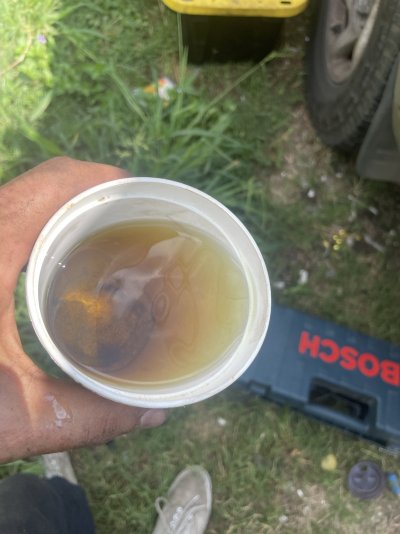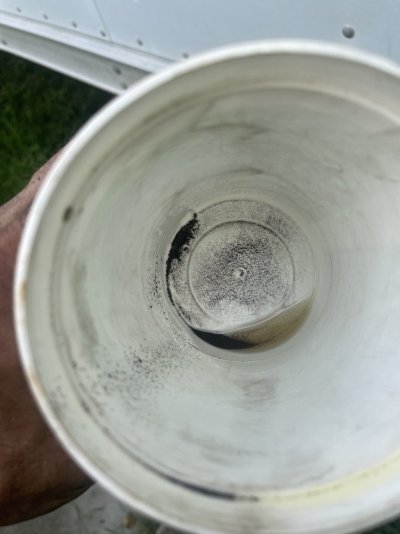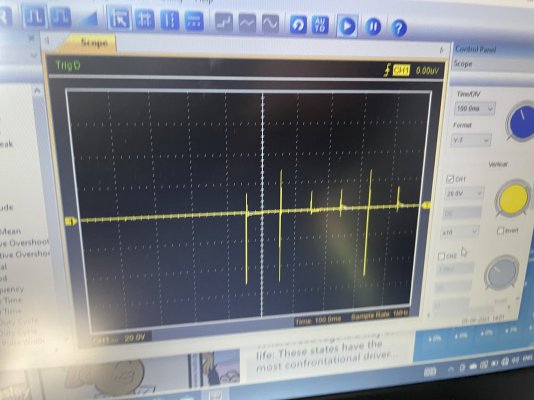I did another compression test today. Pulled all glow plugs (except for one which is bent over, not allowing the socket to slip onto it. I have no idea how it might have gotten this way). I am using a Harbor Freight compression tester as a base. I have a M10x1.0 ORB fitting, 18” grease whip, quick connect with Schrader valve, and a 0-600 psi gauge. I did not trust the HF gauge as it leaked out all of the glycerin and besides, the needle seemed to stick when cranking. So I replaced the gauge with one from a nearby hydraulic supply shop. It seems to be of better quality, though I have not tested it against another gauge.
The compression tester holds pressure. There is some question of whether a long hose upstream of the Schrader valve will lower compression numbers. It seems the proper way to account for this would be to add the extra volume of the hose to the full cylinder volume and to the compressed cylinder volume and compare the resulting compression ratio to that of the cylinder without the hose. This ratio should give the amount of apparent loss in compression due to the addition of the hose. Assuming a 1/8” diameter by 18” hose, I calculate the volume of the hose to be about .221 cu in. The engine is 444 cu in, 55.5 to a cylinder. Dividing by 17.5:1 compression ratio gives 3.171 cu in volume at TDC. New cylinder volumes at BDC and TDC respectively would be 55.721 cu in and 3.392 cu in. The resulting compression ratio including the volume of the hose would then be approximately 16.43:1. By this logic, my apparent compression readings should equal approximately 94% of the actual compression produced. I felt I needed to go through these calculations to attempt to confirm the accuracy of my compression numbers, which as you may have guessed, are low:
1: 220
2: 180
3: (not tested - bent glow plug)
4: 170
5: 200
6: 200
7: 200
8: 140
What surprises me is that, with the exception of cylinder 8, all cylinders are with 25% of each other. Regardless, I want to make sure to verify the results produced by my setup against something else known. I hope to plug what I have (minus the adapter) into my truck’s gas engine and compare against my gas compression tester to definitively verify these results.
Low compression of this magnitude would certainly explain why everything else seems to check out, but the engine just won’t fire. I am still hesitant to say the engine was severely overheated, as the driver says he managed to shut the engine off very shortly after the temperature warning light came on. I saw a mention of loose injector hold-down bolts causing low compression. Are there any common reasons for low compression in an otherwise healthy engine?



